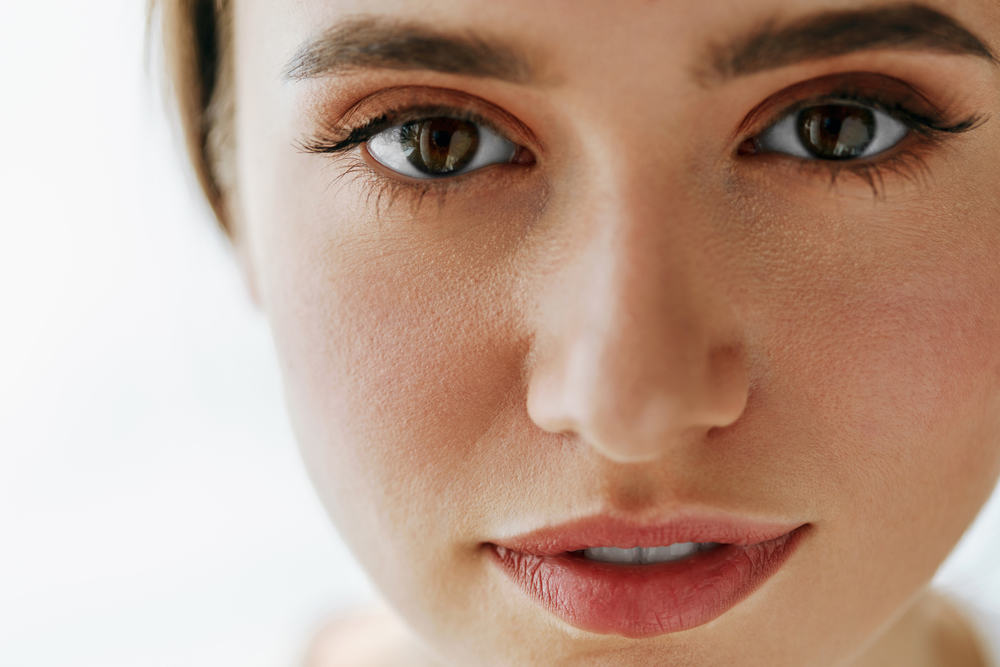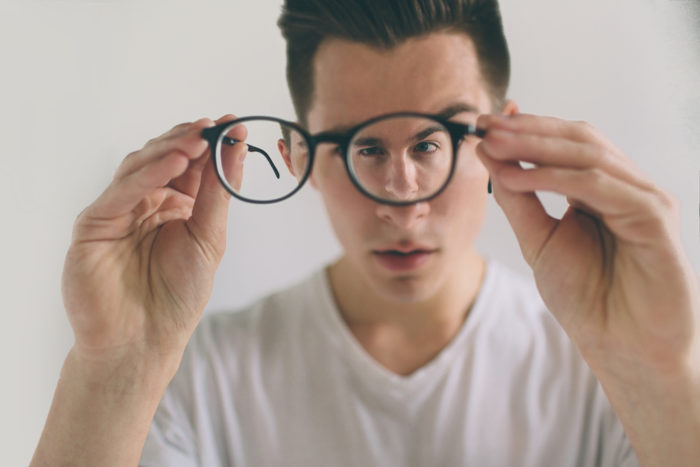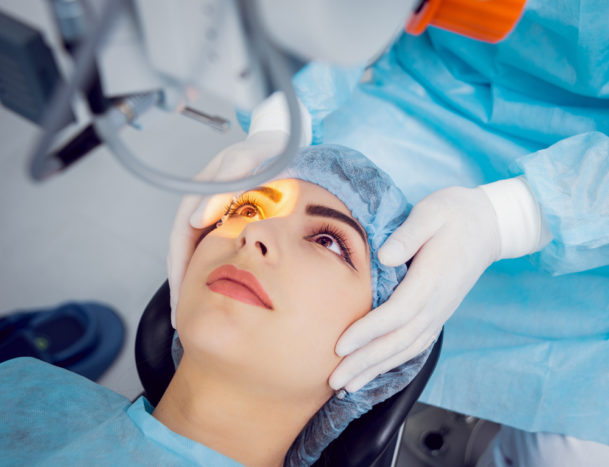Contents:
- Medical Video: Getting Rid of My Glasses! My Natural Eyesight Improvement Journey (See Description for Update)
- Is that a cylinder eye?
- Causes of cylinder eyes
- Symptoms and characteristics of cylinder eyes
- How do doctors diagnose cylinder eyes?
- Can the cylinder eye be treated?
- 1. Use glasses or contact lenses
- 2. LASIK (lAsser-assisted in situ keratomileusis)
- 3. Laser-assisted subepithelial keratomileusis (LASEK)
- 4. Photorefractive keratectomy (PRK).
- 5. AK or LRI (astigmatic keratotomy)
- How do you keep this cylinder from getting worse?
- Don't get me wrong! Get to know the difference in cylinder eyes and minus eyes
- 1. The cause of vision is blurred
- 2. Symptoms
- 3. Sufferers
- 4. Lens used
- 5. Eye damage condition
Medical Video: Getting Rid of My Glasses! My Natural Eyesight Improvement Journey (See Description for Update)
Have you done an eye test? Do the results show that you have cylindrical eyes? Some of you may have cylindrical eyes, some may have one but don't realize it. To find out if your eyes are cylindrical or not, you should check your eyes with a doctor. Approximately, what causes the cylinder eye?
Is that a cylinder eye?
Cylindrical eyes or in medical terms often referred to as astigmatism are problems in the eye because the shape of the cornea does not have perfect curvature. Normal eyes have a corneal surface that has even curvature. So, when light comes to the eye, the light will be spread evenly and give you clear vision.
However, in eyes that are not perfectly round, the light is not spread evenly throughout the eyes. So that your vision can become rather blurry and out of focus. This is why people who have cylindrical eyes will usually experience blurred vision problems.
Causes of cylinder eyes
Astigmatism or cylinder eyes are caused by imperfect curvature in the cornea or eye lens. Generally, this condition is congenital. However, astigmatism can also develop due to other causes, such as eye injuries, eye diseases, or after eye surgery.
A condition called keratoconus can also cause cylindrical eyes, but this rarely happens. Keratoconus is a health disorder that makes the cornea thinner and shaped to become more cone, so that it can cause astigmatism or cylindrical eyes.
Maybe you often hear that bad habits can cause astigmatism. Like reading in dim light, sitting very close to the television, playing handphone or a computer in a dark room, and so on. However, it turns out that all this is just myth. This habit will not cause you to have astigmatism or cylindrical eyes. However, don't imitate that bad habit too.
Astigmatism is a bias error caused by the cornea or lens that is not flat or smooth curved, appears from birth or can arise due to injury to the eye, disease, or surgery. Astigmatism is not caused by reading in bad light, sitting too close to the TV, or squinting.
Astigmatism can appear along with other bias errors, such as:
- Nearsightedness (miopi): this condition causes the cornea to be too curved or your eyes longer than normal, causing blurred vision for distant objects.
- Nearsightedness (hyperopia): a condition in which the cornea is too slightly curved or your eyes are shorter than normal, causing a blurred view for a nearby object.
Symptoms and characteristics of cylinder eyes
Astigmatism can only be experienced in one eye, but neither can either. Although the severity of astigmatism in each eye is different. That means you can only experience astigmatism in your left eye, or your right eye, or your eyes at different levels. Cylinders also usually accompany nearsightedness (myopia) and farsightedness (hyperopia).
In mild cases, the cylinder usually does not show any symptoms. Your vision may be just a little blurry or blurry. Meanwhile, severe cylindrical eyes can show blurred visual symptoms at close and far distances. In addition, a severe cylinder can also make you experience headaches, tired eyes, and unstable vision, especially when reading a book, staring at a computer screen, or looking in the distance.
How do doctors diagnose cylinder eyes?
Before you are diagnosed with a cylindrical eye, the ophthalmologist will conduct several checks to check your eyes. Here are some checks that must be performed to detect whether you suffer from astigmatism (cylinder eyes) or not:
- Vision test: the doctor will ask you to read the letters on the board to test your vision on the visual acuity test.
- Test for measuring corneal curvature (keratometry). Doctors use a keratometer to measure the curvature on the surface of the cornea.
- Test to measure the focus of light.
Can the cylinder eye be treated?
It is best to consult with your ophthalmologist about what is appropriate and according to the severity of your cylinder. Usually cylinders can be handled with the use of glasses or contact lenses. However, if the cylinder is still in a light level, you may not need to use the visual aid.
Basically, there are 3 ways to treat cylindrical eyes, namely by using eyeglasses, contact lenses and also surgery or surgery. Even cases of very light cylindrical eyes can not require any treatment.
1. Use glasses or contact lenses
In special cylindrical glasses, the lens of the glasses will be designed to curl to ward off vision that looks blurred. There are also special contact lenses for cylindrical eyes called toric. With this lens, light can be turned correctly towards the eye. The worse your cylinder eyes, the recommended lens is a stiffer-shaped lens.
However, contact lenses and glasses will not permanently remove the cylinder on your eyes. Both of these tools only help your vision ability.
2. LASIK (lAsser-assisted in situ keratomileusis)
This is an outpatient surgical procedure used to treat farsightedness, farsightedness, and astigmatism. The LASIK procedure uses a laser that is used to form the cornea to improve the way the eye focuses light rays on the retina behind the eyes.
With LASIK, the ophthalmologist creates a thin flap (opening of the layer) in the cornea, using either a knife or laser. The surgeon then folds the flap back, then accurately removes a special amount of corneal tissue under the flap using an excimer laser. This flap is then returned to its original place.
For people who are nearsighted, LASIK is used to flatten the curved cornea too sharply. However, for people who have farsightedness, LASIK is used to bend the cornea that is too flat. LASIK can also justify irregular corneas being normal for people with astigmatism or cylindrical eyes.
Although many people have done LASIK surgery, many people also cannot do it. About 30 percent of patients who are routinely evaluated by an ophthalmologist are refused to do LASIK surgery for various reasons.
Starting from under the age of 18, are pregnant or breastfeeding, have a certain disease or health condition, or have a less stable eye condition. Contact your doctor to check whether you can be a candidate for LASIK surgery.
3. Laser-assisted subepithelial keratomileusis (LASEK)
This is a procedure for dealing with cylindrical eyes. Where the thinner layer of the cornea is folded backward to limit eye injury caused by daily activities or exercise.
LASEK can be a better choice if you have a thin cornea or you have a high risk of eye injury at work or from exercise.
4. Photorefractive keratectomy (PRK).
This eye surgery is used to correct farsightedness, farsightedness, or mild to moderate astigmatism. During PRK surgery, the eye surgeon uses a laser to reshape the cornea.
Lasers that provide cool emission from ultraviolet light are used on the surface of the cornea, not below flap cornea as in LASIK. PRK can also be done with corneal imaging on a computer.
To find out which one is right for you, you should consult your eye doctor. If you want to do surgery, you must have healthy eyes without problems with the retina or corneal scars.
By doing this eye surgery, you can improve the condition of your eyes and heal your cylinder eyes. Whereas, glasses and contact lenses only help your vision, not cure.
5. AK or LRI (astigmatic keratotomy)
This is not laser eye surgery, but surgery is used to correct astigmatism or cylindrical eyes. Corneas of people who have astigmatism are usually shaped like footballs.
AK or LRI corrects astigmatism or cylinder eyes by making one or two incisions in the steepest part of the cornea. This incision makes the cornea more relaxed and rounder. This eye surgery can stand alone or be combined with PRK, LASIK, or RK.
How do you keep this cylinder from getting worse?
Cylinders without surgery cannot recover. Even so, the condition of this cylinder can be kept from getting worse. The high stress on the eye or stress on the eye is a condition that can worsen the cylinder eye.
Usually, a tense eye will cause more severe symptoms of the cylinder, such as, the view will feel more opaque, feel a headache, and must squint when you want to focus your eyes. These things usually cause eye strain:
- Using a computer or TV or screen gadget for a long time
- Reading in bad lighting
- Don't drink enough water. A less hydrated body will reduce eye hydration too
- Eyes that lack nutrition
So, do these things to prevent your cylinder eyes getting worse:
- Always give your eyes time to rest, especially if you work in front of a computer screen. Do it with 20-20-20 method.
- Don't forget to blink. Blinking does not reduce stress on the eyes, but this can prevent dry eyes.
- Always provide bright lighting. Poor lighting makes the eyes focus more and more tense. Use bright LED lights while on the move.
Don't get me wrong! Get to know the difference in cylinder eyes and minus eyes
Minus and cylinder eyes are sometimes interpreted the same for some people who do not know the difference. Below are some things that distinguish between minus eyes and cylindrical eyes:
1. The cause of vision is blurred
In the minus eye, the cause of the view becomes blurred is the curvature of the cornea that is too large so that the incoming light cannot focus. The unfocused light finally does not fall right on the retina, but falls in front of the retina. As a result, the view becomes unclear or blurred.
Unlike the minus eye, the eyes of the cylinder are blurred because of the disability of the cornea and irregular curvature. The curvature can change the incoming light or refract the light. As a result, light does not fall right on the retina, but in front of or behind the retina. As a result, the eyes cannot see objects clearly.
2. Symptoms
When looking at an object, the sight of a minus eye sufferer will appear blurred and the head feels dizzy. Whereas people with cylindrical eyes when looking at an object, not only their vision is blurred and causes dizziness, but also shadows and the shape of the object becomes unclear (eg straight lines appear to be slanted). This is because there is refraction of the light by the cornea.
3. Sufferers
Minus and cylinder eyes can occur due to hereditary factors. But besides heredity, minus eyes and cylinders can also occur by several other things. Reporting from Healthline, the National Eye Institute concluded that minus eyes often occur in children aged 8-12 years. This happens along with the development of the shape of the eye.
So, adults who have minus eyes, usually have this eye damage from a small age. In addition, health conditions can also lead to minus eyes, such as diabetes.While the cylindrical eye usually occurs due to continued severe minus eye damage, cataract removal surgery, and also suffering from keratoconus (corneal degeneration).
4. Lens used
To overcome the minus eye, the glasses used must have a concave lens or negative lens. Concave lenses help reduce the corneal curvature that is too large so that light can focus and fall right on the retina. While the cylinder eye can be overcome with cylindrical glasses. The cylindrical lens helps to combine several shadows due to refraction into one shadow so that the view is no longer blurred.
5. Eye damage condition
Although the minus eye can be overcome by using glasses or a lens box. However, the minus eye condition can increase until the patient is 18 or 20 years old. This can happen because the sufferer does not maintain eye health, for example, too often staring at a computer screen or cellphone.
While the cylindrical eye tends not to increase if the sufferer uses glasses or lens box that fits the size. So, if a patient with a cylinder is given the right glasses or contact lenses, the size of the cylinder will not increase.
















